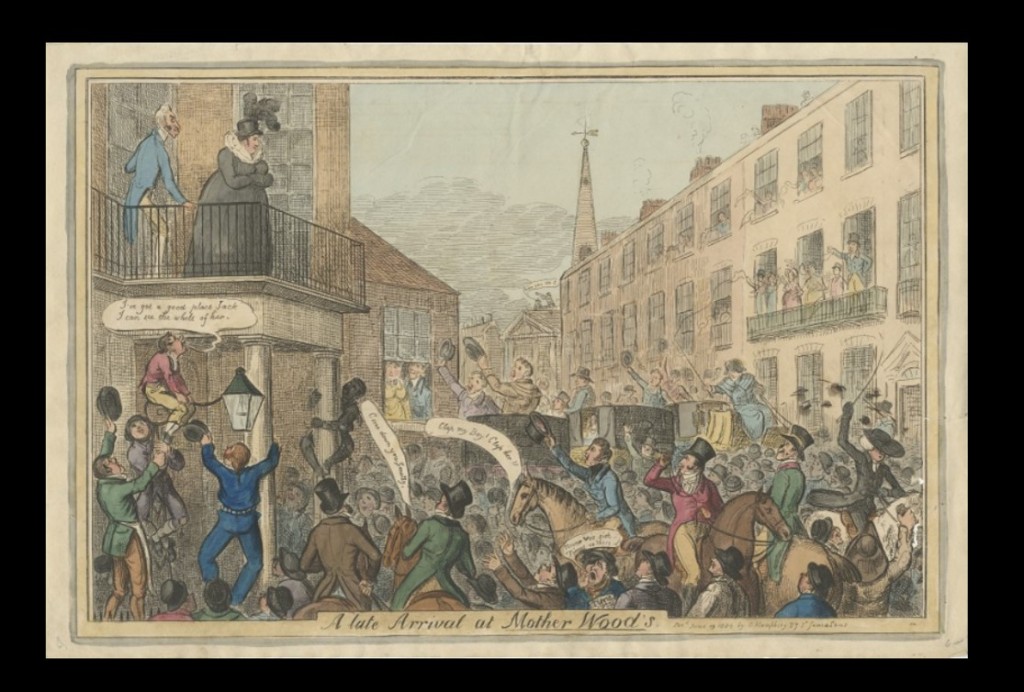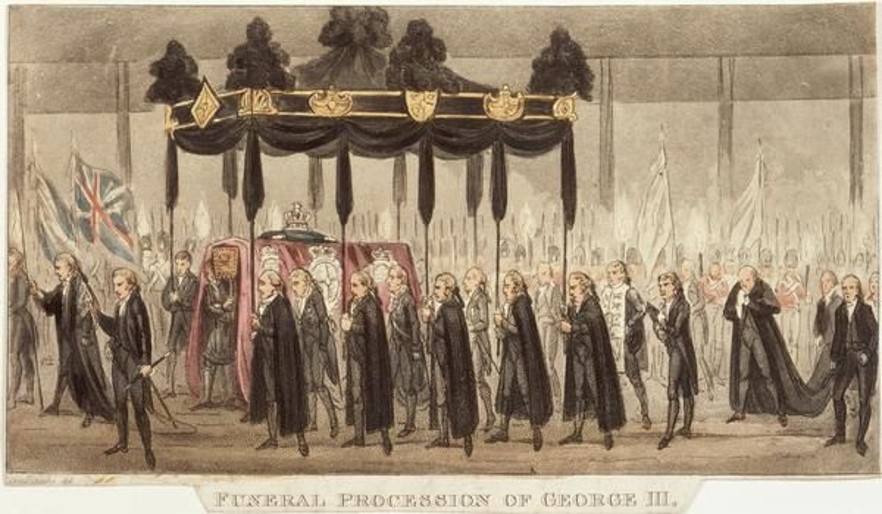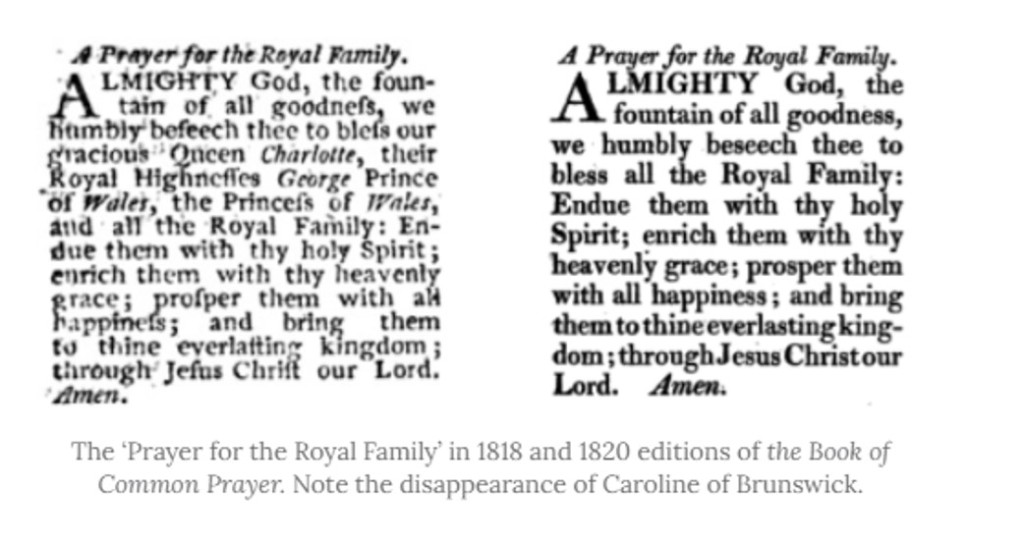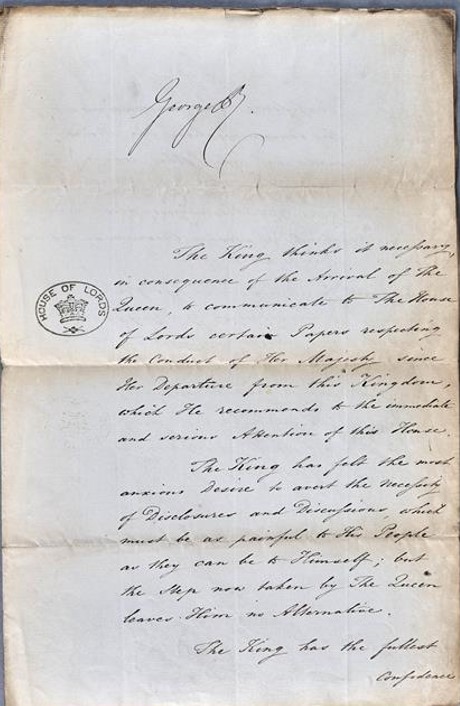King George III died on 29 January 1820 and George became George IV of United Kingdom and Hannover. Caroline was no longer the Princess of Wales but Queen Consort. The dynamics of their relationship had changed yet again. George was simply not prepared to accept the notion of a Queen Caroline.
George’s first salvo was to deny Caroline public recognition of her royal status. Foreign dignitaries were informed that Caroline was not regarded as royal and was not to be extended the diplomatic niceties normally afforded to the monarch’s spouse. Foreign ambassadors and even the pope no longer received her
On the domestic front, George succeeded, against his government’s advice, in removing getting Caroline’s name was removed from the liturgy of the Church England. In other words, clergymen across the country were instructed not to mention the Queen in Sunday prayers for the Royal Family. It was a fairly easy win for George as the Church of England was the Establishment / Tory Party at prayer.
This was more than a petty snub. Whilst Caroline was a fit enough person to be commended to the Almighty in prayer, it was would be difficult to argue that she should not be afforded her status as George’s consort.
The issue also brought the Queen Caroline affair in the lives of every Anglican churchgoer and made churches one of the many arenas in which Caroline’s case was fought. Every church service churchgoers and clergymen were obliged to take a stand on this. And for those sympathetic to Caroline, it was a weekly reminder of the George’s treatment of his wife as well as the Church of England’s subservience to the monarch

Caroline was incensed by the removal of her name from the liturgy and it was under advice of Matthew Wood former Lord Mayor of London turned London MP she refused the bribe of £50k a year in exchange for promising never to return to Britain or its dominions and relinquishing her title Queen Consort.
Wood met Caroline in Calais and escorted her back to England on board the Prince Leopold (a mail ship) arriving at Dover on 5 June 1820 where she was given a tumultuous welcome plus a royal salute from the commandant of the garrison plus a guard of honour. Huge crowds of ecstatic fans welcomed her return and she was mobbed all the way to London.
Caroline returned to London in triumph on 6 June 1820, in an open carriage through thronging crowds in the metropolis to stay initially with Wood at his home in London’s Mayfair. With Matthew Wood as an advisor, Caroline’s campaign became virtually indistinguishable from that of political reformers. Her advisors were drawn from London’s radical circles. Her responses to thousands of addresses or petitions she received were overtly political written by leading radicals such as William Cobbett.
The public were not the only ones to acknowledge Caroline. 5,000 sailors marched pass to pay their own respects to the Queen. On 15 June Guards in the Kings Mews mutinied showing that the government could not be sure that it would rely on the loyalty of the military.
On the very same day as Caroline arrived back in England George submitted to both Houses of Parliament evidence obtained by the Milan Commission in two identical green bags. He had initiated divorce proceedings against his wife.
A House of Lords Committee of 15 peers opened the green bag of evidence and a week later reported back that there was sufficient evidence of Caroline’s improper relations with Pergami and recommended the introduction of a Bill of Pains and Penalties.
And postponed his coronation scheduled for 1 August 1820. The decks were cleared for the Queen’s trial.



